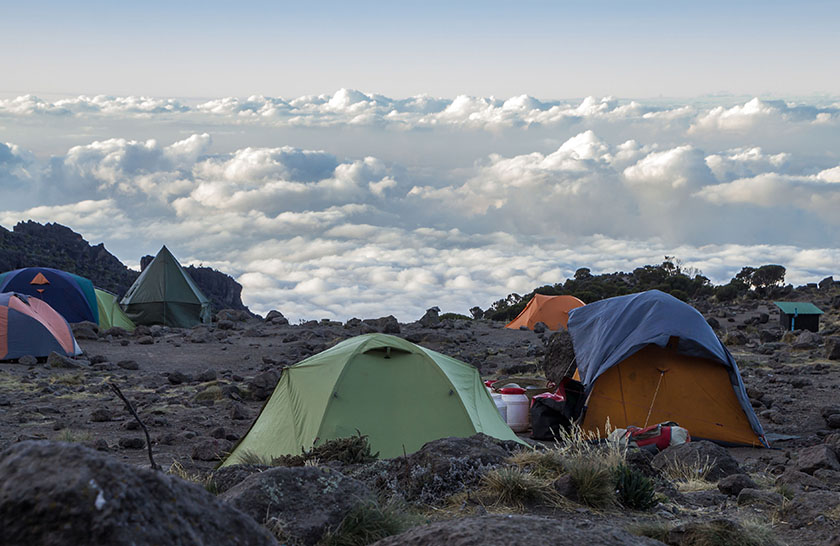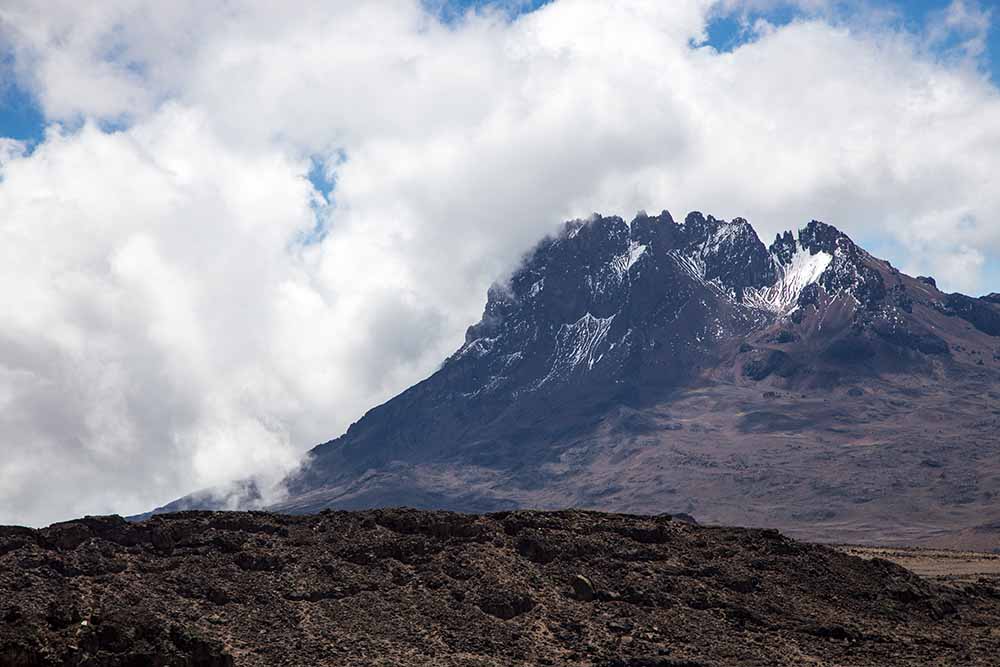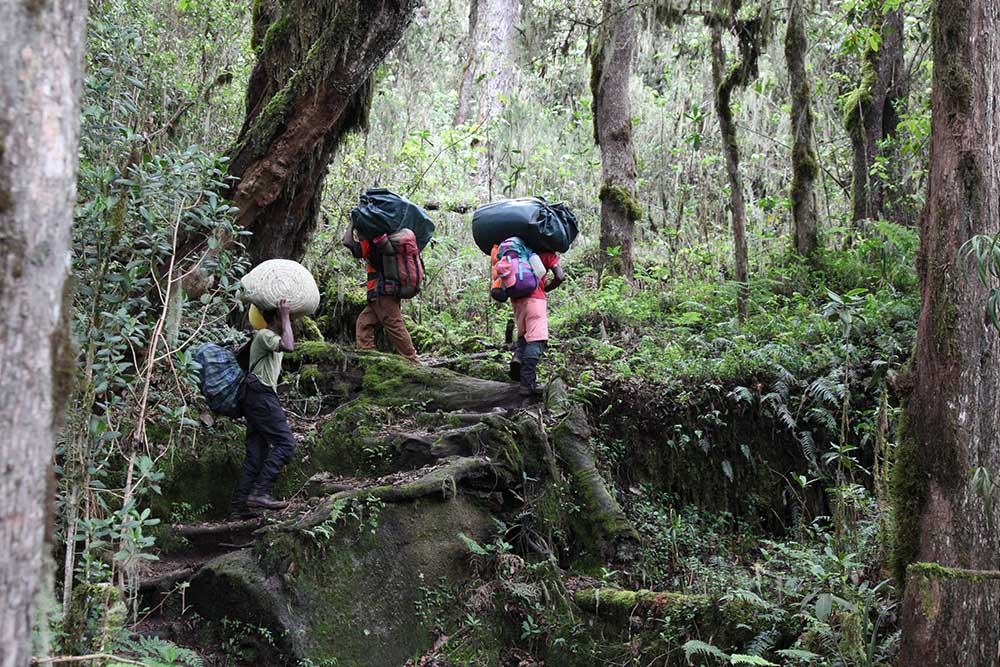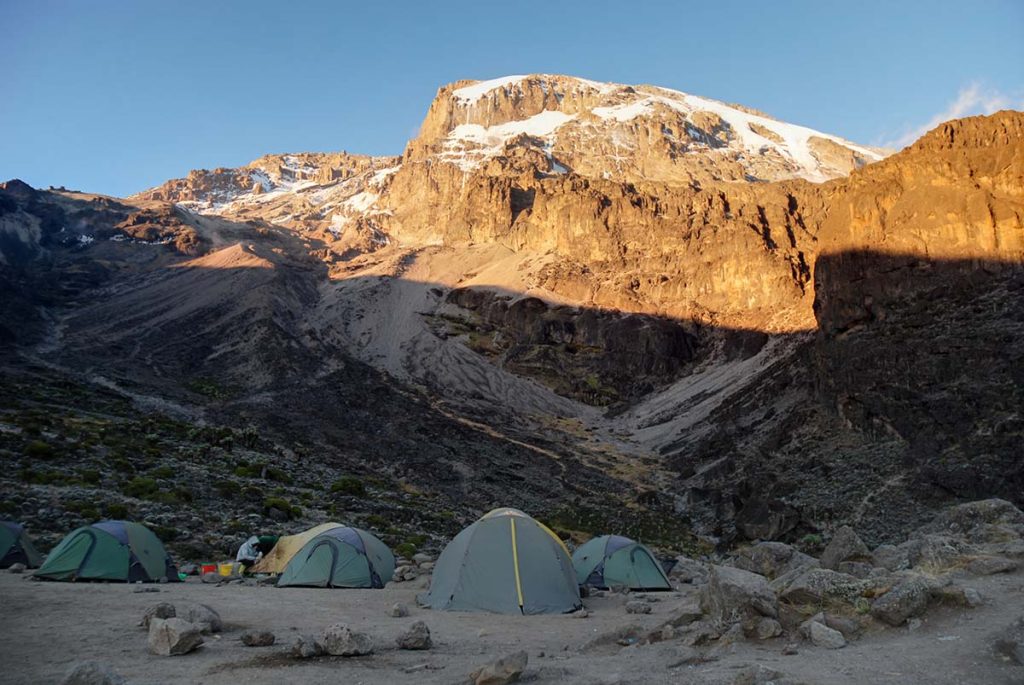What to pack for Kilimanjaro trek
It is highly recommended to travel with minimal and practical luggage, and include versatile and long-lasting items that can be layered according to fluctuating temperatures and weather conditions (which are bound to change). Prior to your trip, make sure to thoroughly test and familiarize yourself with all your equipment, and exercise sound judgment and discretion when deciding what to pack. Remember, nobody understands your needs better than yourself! If you tend to feel cold easily, consider packing an additional layer or two. And if you have a sensitive stomach, it’s wise to bring extra supplies of your preferred snacks. You should always remember that most of the gear you can rent right before your Kilimanjaro climb, so do not worry if in all the excitement you forget something essential.
Please note that when preparing for your trek, it is important to pack a duffel bag or backpack instead of suitcases. The porters who will be assisting you during the trek carry these bags on their heads, so it is crucial that the weight does not exceed 12kg.
For your convenience, your backpack will be packed inside special trekking bags that have been specifically manufactured for us in Tanzania.
Trekking poles can be quite helpful during the trek. If you do not have your own, you have the option to rent them from us.
While some people prefer to use gaiters to keep their shoes dry or for downhill sections with gravelly surfaces, it is not mandatory. Gaiters can be rented at a reasonable price if you choose to use them.
Having a good day pack is essential as it will allow you to carry extra layers, water, and some snacks.
You should rememeber that PET plastic bottles are not allowed on Kilimanjaro. It is recommended to bring aluminum or Nalgene-type bottles for water. Camelbacks can also be useful, but please keep in mind that water may freeze, especially on summit night, so having bottles is necessary. It is important to drink at least 3 liters of water per day to stay hydrated.
It is crucial to have sunscreen with a high factor, lip balm, and polarised sunglasses. Additionally, make sure to pack a headlamp and two extra sets of batteries. For snacks, include dried fruit, nuts, sweets, energy bars, and powdered energy mix for your day pack. When it comes to toiletries, keep it minimal with a toothbrush, toothpaste, deodorant, wet wipes, and toilet paper.
Soap is usually provided by operators, but porters only supply enough water for washing your face. Our team suggests bringing a nail brush and nail cutter to maintain short toenails. Don’t forget a lightweight travel towel as other towels won’t dry. Women should bring necessary items as altitude can affect monthly cycles.
Cold and high altitude can affect cameras and their batteries, so bring spare batteries and memory cards. Lastly, a well-stocked first-aid kit is essential. To pass the time, consider bringing a deck of cards or a book.
Ensure that you are well-prepared for the varying temperatures along your route, which can range from 30 degrees Celsius at the bottom to -20 degrees Celsius at the top. It is crucial to account for the full temperature range.
Include thermal underwear, both top and bottoms, in your packing list. While it may not be the most fashionable choice, it will effectively keep you warm.
Pack two lightweight fleece tops and one thicker fleece. Opt for breathable fleece material to draw moisture away from your body.
Invest in a good quality shell to block the wind. Try it on over your fleece tops. If you don’t own one, you can consider renting it.
Choose high-quality trekking pants that fit comfortably over your thermal underpants.
Ensure your clothing is waterproof. Adequate rain protection is essential as it can be challenging to dry wet clothes on the mountain. A waterproof jacket and a lightweight pair of waterproof pants that can be worn over your trekking pants will suffice. Our guides recommend using umbrellas in the humid forest. Alternatively, a poncho is a cost-effective option that will keep you and your backpack dry in wet forests, as traditional rain gear can be too warm.
Bring thermal gloves to wear underneath and a pair of wind/waterproof gloves for the outer layer.
Carry a hat with a brim and a good beanie. A fleece beanie is preferable to a woolen one as it dries more easily.
Consider bringing a buff, as it is excellent for protecting your neck and face and offers versatility.
Avoid wearing cotton t-shirts once the temperature drops. Cotton tends to stick to your body when you sweat, causing heat loss. Opt for quick-drying gym-type tops instead.
Wear liner socks to prevent blisters. Good quality thermal socks are a must.
For the first day’s climb in the warmth of the rainforest, shorts and a vest may come in handy.
In addition to suitable clothing and layering options for warmth, invest in a pair of good hiking boots. Leather boots are a reliable choice, although they can be heavy. Many prefer boots with Gore-Tex material. Avoid wearing sneakers as they lack ankle support and warmth required for proper hiking. Most importantly, make sure your boots are properly worn-in before your trek.






